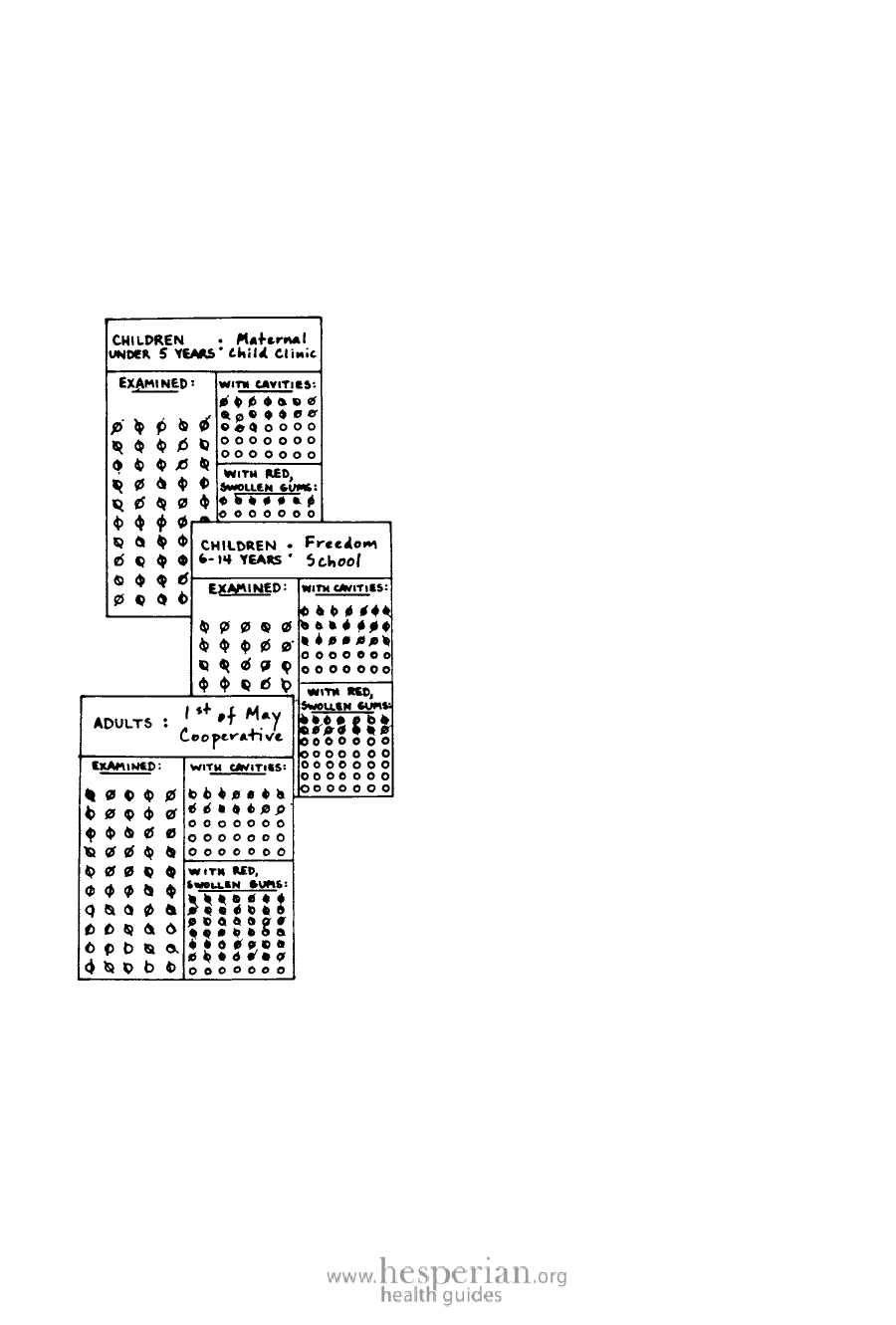
220 Where There Is No Dentist 2012
Surveys
It is a good idea to know how many persons in your community have cavities
and gum disease. Look in the mouths of children and adults and make a
record of what you see. Here is an example that is used in Mozambique:
Put a line through the circle for each person with:
• cavities Ø
• red, swollen gums Ø
The dental workers in Mozambique do a quick
survey in 2 schools, 2 mother-and-child health
clinics, and 2 cooperatives or factories in their
community.
In each place, they examine 50 persons. This
is enough to give an idea of the general health
of teeth and gums in the community.
They make a paper for each age group.
Each paper has 3 sections. They make
a mark for each person they see, until
all 50 circles have marks in them. They
make extra marks if they see a tooth
and/or gum problem.
In this example, you can see that
children have more problems with
cavities, while adults suffer more from
gum disease. This is often true.
This survey helps the dental worker
in three ways:
1. it shows how serious tooth
decay and gum disease are in
the community.
2. it shows which age group is
suffering the most. To these
people the dental worker must
plan to give the most attention.
3. it gives the dental worker
something to show the people
when they are discussing why
to change some old habits and
adapt some new ideas.